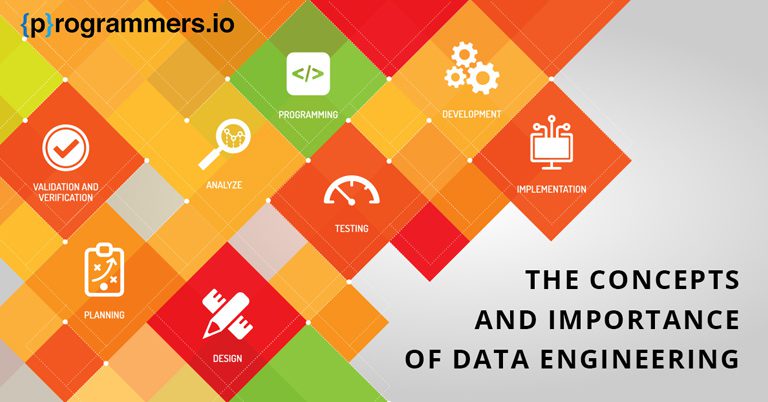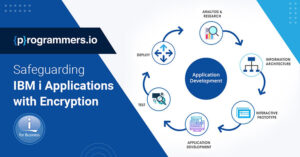The Concepts and Importance of Data Engineering
We are surrounded by data in our day to day lives. Software engineering has revolutionized over the years and now includes data engineering as an integral part of it. Data engineering is a useful part of organizational functions today and is used for many real-time purposes such as storing, cleaning and transporting data across the organizational structure.
For starters and non-specialists, data engineering is the field that oversees data analysis within an organization. Data engineers are tasked with getting data from different sources and then cleaning it before storage. The data, once cleaned, is processed into solid chunks of finalized data, which can then be processed for business analytics, data visualization and data science solutions.
The solutions you derive from your data will only be as good as the data you use to reach these conclusions and solutions. If your data isn’t structured and cleaned properly, you will fail to get the results that you aspire to achieve for your data engineering purposes.
Data engineering oversees the process of visualizing data and creating interactive business intelligence solutions using it. In this article, we take a look at what data engineering is and the key concepts governing it. We also delve deep into the importance of data engineering and why it is a popular job role for aspiring candidates today.
Responsibilities of a Data Engineer
A data engineer is a technical resource tasked with building, architecting, maintaining and testing data systems within an organization. Data engineers are basically tasked with finding out recent trends and patterns in data and creating algorithms to make sure that the data available to organizations is clear for use.
Some of the key responsibilities coming under a data engineer include:
- Getting the data sets required as part of the problem statement.
- Developing, constructing and maintaining all key data structures.
- Developing the entire dataset process.
- Aligning the data architecture together with the business requirements.
- Using programming tools and languages to execute datasets in a manner that is comprehensible to all concerned.
- Importing statistical methods for machine learning
- Making predictive and prescriptive machine learning formulas
- Using the data available to prepare automated tasks and flows
- Delivering all results from actionable data sources in a proper format to the key stakeholders in the organization.
Case Study : Data Loading in snowflake using matellion
Data engineers inside an organization can take any one of these approaches:
Data Flow:
The data flow methodology requires engineers to input data in XML format. As per this data, the organization prepares batches of video, which are updated on an hourly basis. Data engineers, hence, consume the data available to them, design models from it, and store the end result.
Data Modeling and Normalization:
Data modeling and normalization are important tasks that make data more convenient for customers to read and infer. The data modeling and normalization process includes processes like removing duplicates, cleaning data from its sources and changing data to meet a specific model. The normalized data is then stored comprehensively in a data warehouse or a regional database. Data normalization and modeling techniques are mentioned within the ETL or extract, transform and load pipeline.
Data Cleaning:
Data cleaning is another technique followed by data engineers to clean the data and remove all incorrect, duplicate, incomplete and corrupted data sources from within it. Once data engineers combine multiple datasets and data sources, they end up finding many problems such as mislabeling, data duplication, unreliable outputs and incorrect outcomes.
Organizations working on this methodology remove duplicates, filter out all unwanted outliers and handle the missing data sources.
Data Engineering Skills
Data engineers today are required to have almost the same skills as software engineers. However, some of the skills need to be updated to match recent trends, as the world of data engineering has changed by leaps and bounds during the recent past.
Programming Languages
Data engineers are required to have a basic understanding of concepts such as data algorithms and structures. Object oriented programming is also a key part of data engineering and engineers should have command over it. Python is the most common and popular programming language used for data engineering today.
Python is also comprehensively used for machine learning by Artificial Intelligence teams. Scala is also a popular programming language like Python, which serves multiple purposes and runs on the JVM or Java Virtual Machine engine.
Database Management
Data engineers are required to oversee and manage different databases with different data sets stored within them. Since there is extensive data available for usage, data engineers usually store it in a warehouse.
Database technologies include NoSQL and SQL are used to generate the key results. SQL databases usually fall under the definition of RDBMS or regional database management systems. NoSQL databases can come in handy to store key data sources such as graphs in Neo4j and documents in MongoDB.
Cloud Engineering
Cloud engineering is an important pre-req for data engineers to have today. Cloud engineering is a method required to manage servers on the cloud. The servers on the cloud ensure access to data on the cloud for independent teams working from scattered places. Cloud providers like Microsoft Azure, Google Cloud and AWS are the most popular solutions for building systems and hosting cloud platforms.
Data engineering is growing in importance by the day, something we have discussed in this article. The field includes engineers and programmers from all across the job market. If data engineering fascinates you, you should definitely explore a career in the industry.

How can we help you?
We have hundreds of highly-qualified, experienced experts working in 70+ technologies.










